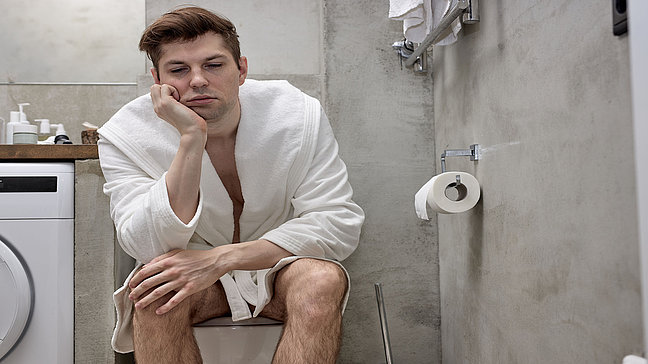
Bladder function measurement (Flow-EMG)
When should a flow EMG be performed?
The flow EMG is recommended for the following complaints or indications:
- Difficulties urinating (urinary retention or incomplete emptying)
- Suspected overactive or weak bladder
- Clarification of incontinence in adults and children
- Symptoms indicating faulty coordination between the bladder and pelvic floor muscles
- Examination in neurological diseases that could affect bladder function
What you need to consider before the Flow-EMG
Before the small bladder function test, you should consider a few points:
- Bladder filling: It is recommended to appear for the examination with a moderately filled bladder.
- Medications: Inform the doctor if you are taking bladder-active or relaxing medications, as these may affect the result.
- Urine test: A urine test is often conducted before the examination to rule out possible infections.
- Pregnancy: Inform the doctor if you are pregnant, as this may be relevant for the examination.
Conducting the Flow-EMG
The examination is carried out in three steps:
- Measurement of urine flow: The patient urinates into a special funnel that measures the flow and volume of the urine.
- Recording of muscle activity: At the same time, small electrodes are placed on the skin in the pelvic floor area to measure muscle activity during urination.
- Evaluation of the results: The data of urine flow and muscle activity are compared to identify possible disorders.
The procedure is painless and takes only a few minutes. It requires no invasive preparation and is therefore well tolerated.
Debriefing and Consultation
After the examination, the doctor discusses the results with you and explains whether any abnormalities were detected. Depending on the findings, further diagnostic steps such as a detailed urodynamic examination or therapeutic measures may be recommended. Complementary therapies may include targeted pelvic floor exercises or medication treatments.
Costs of the flow EMG
The bladder function measurement (Flow-EMG) costs 100.00 euros. This price includes the following services:
Preparatory consultation: A detailed medical history, discussing voiding habits, previous surgeries, and possible neurological disorders.
Conducting the Flow-EMG examination: During the urine flow measurement, the electromyographic activity of the pelvic floor/sphincter is measured simultaneously. Surface electrodes are applied in the perineal area for this purpose.
Evaluation and final discussion: Analysis of the measurement results and discussion of further diagnostic or therapeutic steps.
![[Translate to English:]](/fileadmin/_processed_/1/d/csm_UZ-Logo-2024-breit-aK-1500px-white-red_4b49b8d28c.png)


